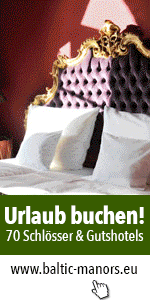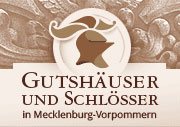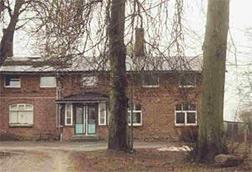Woosten Estate
Woosten was first mentioned in 1269 in a bequest to its church. The current church, which looks out over a wide stretch of land, dates from the fourteenth century. A small moated castle probably stood below the church from the thirteenth century onwards.
In 1296 the Cistercian monastery Neuenkamp bought the primary ownership of Woosten, Wendisch Waren, and several neighboring villages from the Duke of Werle. But in 1455 it sold this ownership back to the Duke “because of malicious neighbors.” The von Grabow family was enfeoffed with the area of Woosten parish after 1419 at the latest.
In 1630 Woosten and Wendisch Waren each counted 22 self-sufficient holdings (farmers and cotters) and 350 inhabitants in total, of whom by 1649 only 49 had survived plague and war. The von Grabows had mortgaged Woosten to the Swedish Major Trapmann, who with the use of violence turned the farmers’ property into estate land, shooting a farmer and fleeing. It was not until 1700 that Hans von Grabow redeemed the mortgage.
In 1704 Woosten still had three self-sufficient holdings (two farmers and two cotters), Wendisch Waren six, and the two villages together counted 118 inhabitants over the age of 16.
In 1740 the von Grabows built a manor house on the site of the former castle. In 1751 Woosten, now an outright estate village with no independent farmers, passed by marriage to Engelke von Plessen when he married the widow of the former estate owner. The actual heirs could not take possession of their inheritance, so the newlyweds took the estate by way of pledge and settled the debts and claims. After his wife’s death (1766) Engelke von Plessen withdrew for reasons of age. Before he died in 1785, he sold his claims to the Ducal house, which took over the running of Woosten and Wendisch Waren in 1781.
In 1835 Woosten and Wendisch Waren had 260 inhabitants (in 1896, 523; in 2003, 429). The domain possessed 645 hectares (1594 acres) in 1887 and in 1930, 656 hectares (1621 acres), which were supposed to be parceled out in sites of about 20 hectares (40 acres) each, but this plan failed.
The Hamburg businessman Schwarz bought the reduced domain in 1938. He tore down the manor house to build another elsewhere. Before this occurred Schwarz died and the war broke out.
Today only a ping-pong table stands inside the moat. Schwarz’s sister Mrs. Andorfer managed the estate from the inspector’s house. Mrs. Andorfer was driven out in 1945; the estate was confiscated (15 refugee families periodically found shelter in the inspector’s house) and divided into 52 new smallholdings of 6 hectares (15 acres) each. Many new owners abandoned their properties in the following years.
The inspector’s house is today used by the local history and culture club.
Literature:
- Egon Wulf, 725 Jahre Kirche Woosten [725 Years of Woosten Church], Woosten 1994
- Fred Ruchhöft, Die Entwicklung der Kulturlandschaft im Raum Plau-Goldberg. . . [The Development of the Cultural Landscape in the Plau-Goldberg Area. . .], Rostock 2001 (see index under “Woosten”)
Mr. R. Berg contributed to this article.




